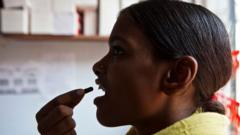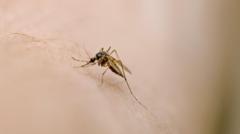In 2022, over three million children are believed to have lost their lives to drug-resistant infections, underscoring a growing global health crisis linked to antimicrobial resistance (AMR). Experts signal urgent measures are necessary to combat this escalating threat.
Global Child Mortality Due to Drug-Resistant Infections Surges

Global Child Mortality Due to Drug-Resistant Infections Surges
A recent study highlights a staggering rise in child deaths attributable to antimicrobial resistance, particularly affecting regions in Africa and South East Asia.
More than three million children worldwide are estimated to have died in 2022 due to infections resistant to antibiotics, according to research conducted by experts in child health. The regions hardest hit appear to be Africa and South East Asia, where antimicrobial resistance (AMR) poses a significant and rising threat. AMR occurs when the microbes that fuel infections evolve to withstand treatment with antibiotic drugs, which has emerged as a critical public health crisis.
This alarming reality is detailed in a new study utilizing data from various sources, including the World Health Organization (WHO) and the World Bank. Researchers found that the number of child fatalities linked to drug-resistant infections exceeded three million last year. Notably, the study reveals a more than tenfold increase in AMR-related infections among children in just a three-year span, a situation potentially exacerbated by the Covid pandemic.
Antibiotics, which are instrumental in treating a wide array of bacterial infections, are sometimes used preventatively; however, they are ineffective against viral infections. The overuse and incorrect use of antibiotics have led to the evolution of drug-resistant bacteria, while the development of new antibiotics has stagnated. Study authors Dr. Yanhong Jessika Hu from Murdoch Children's Research Institute and Professor Herb Harwell from the Clinton Health Access Initiative observed a dramatic rise in the use of "watch antibiotics," with usage soaring by 160% in South East Asia and 126% in Africa from 2019 to 2021. Similarly, "reserve antibiotics," typically reserved for extreme cases, saw increases of 45% and 125% in the same regions, respectively.
The authors emphasize that if current trends continue, treatment options for multidrug-resistant infections could virtually vanish. Prof. Harwell, who is set to present the findings at the upcoming Congress of the European Society of Clinical Microbiology and Infectious Diseases in Vienna, remarked, "AMR is a global issue. It affects everyone, particularly children." He underscored the need for a comprehensive understanding of AMR's impact on child health.
Given that the WHO deems AMR among the gravest health threats we encounter, Prof. Harwell cautioned against simplistic solutions. “This is a complex problem that permeates all areas of medicine and life,” he noted. The optimal approach to curbing resistant infections lies in preventing infections in the first place, which necessitates improved vaccination rates, water sanitation, and hygiene measures.
Dr. Lindsey Edwards, a microbiology senior lecturer at King’s College London, characterized the findings as a critical warning for global health leaders. "Without decisive action, AMR could reverse years of progress in child health, especially in vulnerable areas," she stated. As the world faces rising antimicrobial resistance, the urgent need for appropriate antibiotic usage and extensive preventive health measures has never been clearer.






















